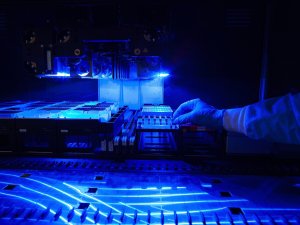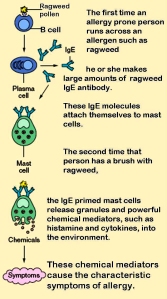I was interviewed for Business Insider Magazine regarding Kailos direct to consumer genetic tests. I think Lydia did a nice job discussing the benefits and limitations of at home genetic testing.
Here’s her article:
I shipped my spit to a genetics company to have it tested, 23andMe style — here’s what I found out
- Oct. 10, 2015, 11:00 AM
- 12,898
- In the past few years, getting genetically tested has become as easy as sending in some spit in a tube.
That information can be used for everything from finding out where your family came from to figuring out if you’re predisposed to certain diseases.
Companies like AncestryDNA and23andMe have been partnering with drug companies to try and figure out what role genetics plays in getting sick, and how it can help us get better faster.
But how much can the average consumer learn from his or her genes?
I decided to try out some tests from Kailos Genetics, a genetic-testing company based in Huntsville, Alabama, to find out. All of the tests Kailos offers are designed to help determine how you might respond to certain medications. These include antidepressants, contraceptives, breast-cancer medication, pain-management treatments, blood thinners, and stomach-acid reducers. You can also opt for an all-inclusive test that includes all of these genetic markers.
About me: I’m a 22-year-old woman who is, apart from some seasonal allergies, healthy. I ordered the contraceptives and antidepressant tests that Kailos offers, since those would be the types of medications I’d be most likely to use at this point in my life. I also have a family history of blood-clot problems, which in some cases can be worsened by oral contraceptives.
Here’s how it went down:
Sending my spit to Kailos
A week after ordering the two tests, I got a big purple envelope in the mail:
 Lydia Ramsey/Business Insider
Lydia Ramsey/Business Insider
The kit came with instructions, a letter explaining the test, two swabs, a collection bag, and an envelope:
 Lydia Ramsey/Business Insider
Lydia Ramsey/Business Insider
I opened up the first swab and started collecting samples of my cheek tissue on the left side of my mouth. To get a good sample, I had to scrape the side of my cheek up and down with the swab for about 30 seconds.
 Lydia Ramsey/Business Insider
Lydia Ramsey/Business Insider
After repeating the process with the other swab, I put both of them back in the collection bag, packed them all up in the return envelope, and shipped it off to Kailos for testing:
 Lydia Ramsey/Business Insider
Lydia Ramsey/Business Insider
The results
Once Kailos’ diagnostic lab got my envelope, my sample went through an enrichment process to separate the genetic material — my DNA — from the rest of the stuff on the cotton swab so they can have a better look. Then, the lab technicians looked at my DNA and used a computer to home in on the genetic regions that are relevant to the specific test they were running.
Next, they turned the results over to Kailos’ in-house physicians to interpret the results. These doctors are what allow Kailos to sidestep the problem of needing a middleman — who’d most likely be my primary-care doctor — to discuss my results with me.
Instead of talking to a doctor, my results were posted online to my account on Kailos’ website, which I’d created to order the test.
Thumbs-up for medication No. 1
 Lydia Ramsey/Business Insider
Lydia Ramsey/Business Insider
For the first part of my results, which looked at whether I should avoid certain contraceptives, I saw two big “thumbs-up” symbols.
This meant that the test, which looked at two genes related to how my blood clots, found they were functioning normally — there was no reason they could see that I shouldn’t take the medication.
Those genes were my Factor 2 and Factor 5 genes. Research has found that people with a specific mutation, or tweak, on either of these genes can be at risk of dangerous blood clots, which can stop the blood from flowing from your heart to other parts of your body.
All of this is important for someone considering using contraceptives, since the kind that are taken orally (aka many traditional birth-control pills) can be linked with an increased risk of blood clots in some people; the hormone estrogen in the pills increases certain proteins in the blood that help it stick together and clot.
Thumbs-up for medication No. 1 … sort of
 Lydia Ramsey/Business Insider
Lydia Ramsey/Business Insider
The next part of my test results focused on whether I had genetic tweaks that could make it a bad idea for me to take antidepressants. The test looked at potential indications against taking three of the most popular types: tricyclic antidepressants, selective serotonin reuptake inhibitors (SSRIs), and serotonin-norepinephrine reuptake inhibitors (SNRIs).
Genetics can give us clues about how good our body is at absorbing certain oral antidepressant medications. The CYP2D6 and CYP2C19 genes, for example, make proteins in the liver that break down a hefty proportion of prescription drugs, including antidepressants.
The good news? I should be good to go with all three types: I don’t have any mutations that would cause my body to absorb the drugs poorly.
But while my results suggested my body could handle any of these medications — should a psychiatrist or mental-health professional prescribe them to me, of course — experts say the results aren’t so clear.
Carmela Thompson, a genetic counselor with Genetic Discovery SF, told Business Insider that although she thinks genetic tests are great for figuring out if a person has a hereditary condition like Huntington’s disease, she wouldn’t recommend using them as the sole way to determine the best solution to treating psychiatric conditions.
At least not yet.
“As far as psychiatric conditions go, we’re not there yet and we may never be there,” said Thompson. That’s because the conditions often have multiple factors in addition to genes at play, like environmental factors, so what’s influenced by genetics isn’t quite as clear.
Why Kailos didn’t run into the same problem as 23andMe
Genetic testing companies, like 23andMe, have run into trouble with the FDA for not getting its approval before making their genetic-health tests, which are pretty similar to the ones Kailos offers, available.
But Kailos is already government regulated. As a Clinical Laboratory Improvement Amendments-regulated industry, Kailos’ lab facilities are regularly inspected by the Centers for Medicare and Medicaid Services, which is in charge of ensuring they’re up to par.
Also, having a physician analyze the tests on Kailos’ end is a key way to steer clear of the roadblocks other genetic-testing companies face. Instead of providing uninterpreted information directly to a consumer, that information is going through a trained professional who can make sure it’s interpreted accurately. Troy Moore, Kailos’ chief scientific officer, told Business Insider the reason they opted for more specific tests for certain medications came from their background as a clinical lab.
The verdict
While it was easy to submit my samples and see my results, I didn’t find the test incredibly helpful. I’m grateful to see my results were positive, but part of me was hoping to learn something more nuanced about how my genetics interacted with medicine, like if a certain type of contraceptive would have less negative side effects or would work better for me than another, or if I shouldn’t take contraceptives at all.
Along with the thumbs-up/thumbs-down rankings, Kailos also provides all the raw information for the genes each test looked at, which could help a doctor dive deeper into what the test means for me.
I could have asked a doctor to go over my results with me — typically the tests Kailos provides are coordinated with a physician, but when I saw the thumbs-up signs, I didn’t think going over my results with a doctor was necessary.
Which brings up a potential concern when it comes to consumer tests overall: What if, after receiving his or her results, a patient who was on medication chose to use them to start making changes to when and how he or she takes it?
This was a concern Thompson brought up when I told her I hadn’t contacted my doctor about my results. Because parts of genetic tests can get really complex, it’s helpful to have people with at least a physician-level knowledge of genetics around to interpret what it all means, she said.
“It’s just a tool,” Thompson added.
 Foggy night with fireworks at Aquatic Park Photo: Shawna Scott/Flickr
Foggy night with fireworks at Aquatic Park Photo: Shawna Scott/Flickr 














